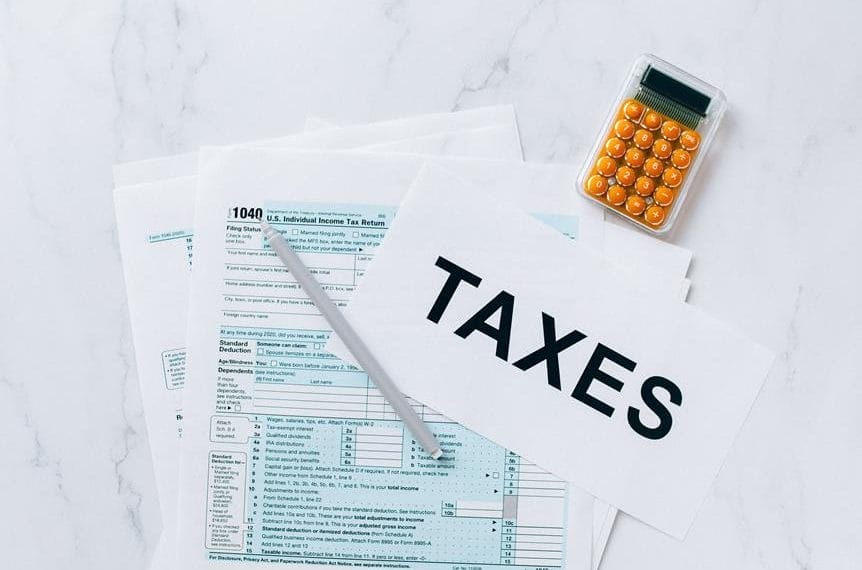When a company files for bankruptcy, it can have far-reaching effects on its employees. News of a bankruptcy filing can create uncertainty and anxiety among workers, who may fear losing their jobs and worry about their financial stability. However, it’s important to understand that the impact of bankruptcy on employees varies depending on the type of bankruptcy filed.
In this article, we will explore the consequences of company bankruptcy on employees and discuss their rights under the legal framework. We will delve into topics such as temporary layoffs and reductions in the workforce, wage and benefit issues, employee claims and debts, and available assistance programs and support. By understanding these aspects, employees can better protect their rights and prepare for future employment opportunities amidst company bankruptcy.
Overview of company bankruptcy and its impact on employees
Company bankruptcy can have significant consequences for employees. When a business files for bankruptcy, it cannot meet its financial obligations and may need to reorganize or liquidate its assets. The impact on employees will depend on the type of bankruptcy filed.
In Chapter 7, liquidation, the company ceases operations, and employees may face immediate layoffs. However, in Chapter 11, reorganization, there is potential for optimism as the company aims to continue operating while restructuring its debts. Employees in Chapter 11 may still receive their paychecks, although there could be uncertainties regarding job security.
Overall, company bankruptcy can create uncertainty among employees about their future employment and financial stability, requiring them to navigate difficult circumstances and seek legal guidance.
Legal framework and employee rights during bankruptcy
During bankruptcy proceedings, a legal framework is in place to protect the rights of employees. The most relevant laws in this context include the Bankruptcy Code and the Worker Adjustment and Retraining Notification Act (WARN). The Bankruptcy Code mandates that employees should receive priority payment for unpaid wages and benefits.
Under WARN, companies must provide advance notice of at least 60 days before implementing mass layoffs or plant closures. This allows employees sufficient time to find alternative employment options. Employees must be aware of their rights under these laws and consult with an attorney if they believe their rights are violated during bankruptcy proceedings.
Temporary Layoffs and Reductions in Workforce
During a company’s bankruptcy proceedings, temporary layoffs and reductions in the workforce may occur. This can be challenging for employees as their job security may be at risk. Temporary layoffs involve employees being placed on unpaid leave for a specified period. These measures are typically implemented to reduce costs and allow the business to restructure.
It’s important to note that temporary layoffs can become permanent under certain circumstances if the company decides to cease operations completely. The decision on which employees are laid off is determined by various factors such as seniority or department needs. Employees must understand their rights, seek legal advice, and explore alternative employment options during these uncertain times.
Effects of bankruptcy on employee job security and layoffs
Bankruptcy can significantly impact employee job security, often leading to layoffs and reductions in workforce. When a company files for bankruptcy, it usually means the business faces financial difficulties and needs to cut costs to stay afloat. As a result, employees may risk losing their jobs or experiencing temporary layoffs.
This can cause uncertainty and stress for workers, who are unsure if they can secure employment elsewhere. The decision-making process for determining which employees are laid off is typically based on factors such as seniority or departmental needs. It is crucial for individuals facing these circumstances to understand their rights and seek legal advice if necessary.
The role of bankruptcy laws in determining workforce reductions
Bankruptcy laws are crucial in determining workforce reductions during a company’s bankruptcy proceedings. These laws provide guidelines and provisions that outline the decision-making process about employee layoffs and job cuts. The bankruptcy court oversees these decisions to ensure fairness and compliance with legal requirements.
When determining workforce reductions, bankruptcy laws often consider factors such as seniority, job performance, and departmental needs. Employers must present a valid business justification for their decision, demonstrating that it is necessary for the company’s financial recovery.
Additionally, bankruptcy laws aim to protect employees by requiring employers to provide advance notice of layoffs and offering severance packages or assistance with finding new employment. These measures help mitigate the impact on affected employees and promote fairness in the process.
Overall, bankruptcy laws balance the company’s and its employees’ interests during a challenging financial period, providing certain safeguards while allowing for necessary restructuring measures.
Wage and Benefit Issues
Wage and benefit issues can create significant employee challenges during a company’s bankruptcy proceedings. Unpaid wages can leave workers struggling to meet financial obligations and support themselves and their families. When a company files for bankruptcy, employees become creditors, meaning their unpaid wages are considered a debt owed by the bankrupt company.
Employee benefits like health insurance and retirement plans may also be affected during bankruptcy. The company may be unable to continue providing these benefits or may reduce or terminate them altogether. This can have long-term implications for employees’ financial security and well-being.
It is important for employees to understand their rights during this process and seek legal advice if necessary. They may be able to file claims with the bankruptcy court to recover unpaid wages and protect their benefits. Additionally, exploring alternative healthcare options and seeking employment that offers comparable benefits could help mitigate some of the challenges faced during this difficult time.
Overall, wage and benefit issues pose significant employee concerns when a company files for bankruptcy. Seeking professional guidance and understanding one’s rights can help navigate these challenges and protect employees’ financial interests.
Unpaid wages and compensation during bankruptcy proceedings
During bankruptcy proceedings, unpaid wages can create significant challenges for employees. When a company files for bankruptcy, employees become creditors, meaning their unpaid wages are considered a debt owed by the bankrupt company. However, the priority in which these debts are paid will depend on the type of bankruptcy filed.
In Chapter 7 liquidation, where the company’s assets are sold to repay its debts, employees’ unpaid wages may be prioritized ahead of other unsecured creditors. This means there is a higher chance of recovering some or all of the unpaid wages.
In Chapter 11 reorganization, where the company aims to continue operating while reorganizing its finances, unpaid wages may be treated as general unsecured claims. In this case, employees may receive only a portion of their unpaid wages or nothing at all.
Employees must file claims with the bankruptcy court to protect their rights and increase their chances of receiving unpaid wages. Seeking legal advice during this process can help navigate the complexities and ensure fair compensation.
Implications for employee benefits, such as health insurance and retirement plans
During company bankruptcy, the fate of employee benefits like health insurance and retirement plans can be uncertain. The implications vary depending on whether the employer files for Chapter 7 or Chapter 11 bankruptcy. In Chapter 7 liquidation, these benefits and the company’s assets will likely be terminated or dissolved. This can leave employees without crucial healthcare coverage and jeopardize their retirement savings.
On the other hand, in Chapter 11 reorganization, there may be a possibility for these benefits to continue during the bankruptcy process. However, this will ultimately depend on the decisions made by the bankruptcy court and the company’s financial condition. Employees should stay informed about any changes to their benefits and explore alternative options to maintain their coverage and plan for retirement.
Employee Claims and Debts
During company bankruptcy, employees may have claims for unpaid wages and benefits. The bankrupt company’s creditors can participate in the bankruptcy proceedings. To protect their rights, employees should contact the clerk of the U.S. Bankruptcy Court in the county where the bankruptcy was filed and submit a proof of claim form.
This form will help determine how much money will be paid to individual employee creditors. Employees must understand that their claims for unpaid wages and benefits may not receive full payment if limited funds are available. The amount paid out will depend on the assets and financial situation of the bankrupt company.
Employee claims for unpaid wages and benefits
During a company’s bankruptcy, employees owed wages and benefits have the right to file claims as creditors. These employee claims for unpaid wages and benefits take priority over other unsecured claims in bankruptcy proceedings. The bankruptcy case’s trustee or committee allocates funds to pay off these employee claims.
However, it is important to note that the amount paid to individual employee creditors may not be the full amount owed if limited funds are available. The payment will depend on the bankrupt company’s financial situation and its assets. Employees should ensure they contact the U.S. Bankruptcy Court for their county and submit a proof of claim form to protect their rights in this process.
Hierarchy of debts in bankruptcy and employee priority
In the complex world of bankruptcy, there is a hierarchy regarding debts and who gets paid first. Employees have a special status in this hierarchy and are given priority over other creditors. When a company files for bankruptcy, it must first fulfill its obligations to its employees by paying any outstanding wages and benefits.
Employee claims for unpaid wages and benefits take precedence over other unsecured claims. This means that employees are more likely to get paid than other creditors, such as suppliers or lenders. However, it’s important to note that the amount paid to individual employee creditors may not be the full amount owed if limited funds are available.
In summary, employees are prioritized in bankruptcy proceedings, ensuring they receive at least some compensation for their hard work and dedication.
Employee Assistance Programs and Support
During company bankruptcy, employees may find themselves in need of additional support. Employee Assistance Programs (EAPs) can provide resources and guidance during these challenging times. EAPs help employees navigate personal and professional difficulties, offering counseling services, financial advice, and job placement assistance.
Employees can use EAPs to receive emotional support, manage stress, and develop coping strategies. These programs also offer access to resources that can aid employees in finding new employment opportunities or retraining for different career paths. EAPs are typically confidential and provided at no cost to the employee.
By utilizing these support services, employees can gain valuable assistance during bankruptcy, ensuring they have the necessary tools to handle the situation with resilience and move forward towards new opportunities.
Resources available to employees during company bankruptcy
During company bankruptcy, employees can access various resources to help them navigate the challenging situation. One significant resource is Employee Assistance Programs (EAPs), which offer support and guidance. These programs provide counseling services, financial advice, and job placement assistance.
Employees can rely on EAPs for emotional support, stress management techniques, and coping strategies. Additionally, these programs can assist individuals in finding new employment opportunities or retraining for different career paths. EAPs are typically confidential and provided at no cost to the employee. By utilizing these support services, employees can gain valuable assistance during bankruptcy and prepare themselves for a fresh start in their professional lives.
Counseling services, job placement assistance, and retraining programs
During company bankruptcy, employees may experience emotional and financial stress. Counseling services are often made available to support them during this difficult time. These services can provide employees with guidance and resources to cope with uncertainty and challenges.
Job placement assistance programs can help employees find new employment opportunities. They offer resume writing assistance, interview coaching, and job search support. These programs aim to connect employees with potential employers and facilitate a smooth transition into new roles.
Retraining programs allow employees to enhance their skills or learn new ones. By participating in these programs, employees can broaden their professional knowledge and improve their chances of securing employment in a different field or industry.
These services and programs aim to support employees in navigating the job market during company bankruptcy and assist them in finding new employment opportunities that align with their qualifications and career goals.
Conclusion
In conclusion, company bankruptcy can have significant implications for employees. It may lead to temporary layoffs, reductions in the workforce, and uncertainty about job security. Unpaid wages and benefits during bankruptcy proceedings can also pose challenges for employees. Understanding the legal framework and their rights is crucial for advocating fair treatment.
While navigating the complexities of bankruptcy, employees can take steps to protect their rights and prepare for future employment opportunities. Documenting unpaid wages or benefits, networking with industry contacts, updating resumes, and enhancing skills can all be beneficial. Seeking professional advice from labor attorneys or relevant professionals can guide you during this difficult time.
Although company bankruptcy can have long-term effects on employees’ careers and financial stability, taking proactive measures can help mitigate the impact and pave the way for a successful transition into new employment opportunities.
Long-term effects of company bankruptcy on employee careers and financial stability
Long-term effects of company bankruptcy can significantly impact employee careers and financial stability. When a company goes bankrupt, employees may face job loss or uncertainty in finding new employment opportunities. This can disrupt their career trajectory and require them to start over or make drastic changes in their professional lives.
Furthermore, the financial instability caused by bankruptcy can have long-lasting consequences for employees’ financial well-being. They may experience a loss of income and struggle to meet their financial obligations, such as paying bills and supporting their families. It may take time for employees to rebuild their finances and regain stability.
The effects of company bankruptcy on employee careers and financial stability underscore the importance of taking proactive steps to protect rights and prepare for future opportunities. Employees can increase their chances of successfully navigating through this challenging situation by knowing their legal rights, documenting unpaid wages or benefits, networking, updating skills, and seeking professional advice.
Steps employees can take to protect their rights and prepare for future employment opportunities
Employees can take several steps to protect their rights and prepare for future employment opportunities during company bankruptcy. First, it is important to understand the legal framework surrounding bankruptcy and employee rights. This knowledge will enable them to advocate for fair treatment and ensure they receive any owed wages or benefits.
Employees should also document any unpaid wages or benefits, keeping records of hours worked, pay stubs, and communication with the employer. This documentation will be crucial in supporting their claims during bankruptcy proceedings.
Additionally, employees should consider networking and contacting contacts within their industry for job leads and potential opportunities. Updating their resume and strengthening their skills through online courses or certifications can also enhance their prospects for future employment.
Lastly, seeking professional advice from labor attorneys or other relevant professionals can guide one in navigating the complexities of company bankruptcy and protecting employee rights. Employees can better position themselves for a successful transition into new employment opportunities by taking these proactive steps.













